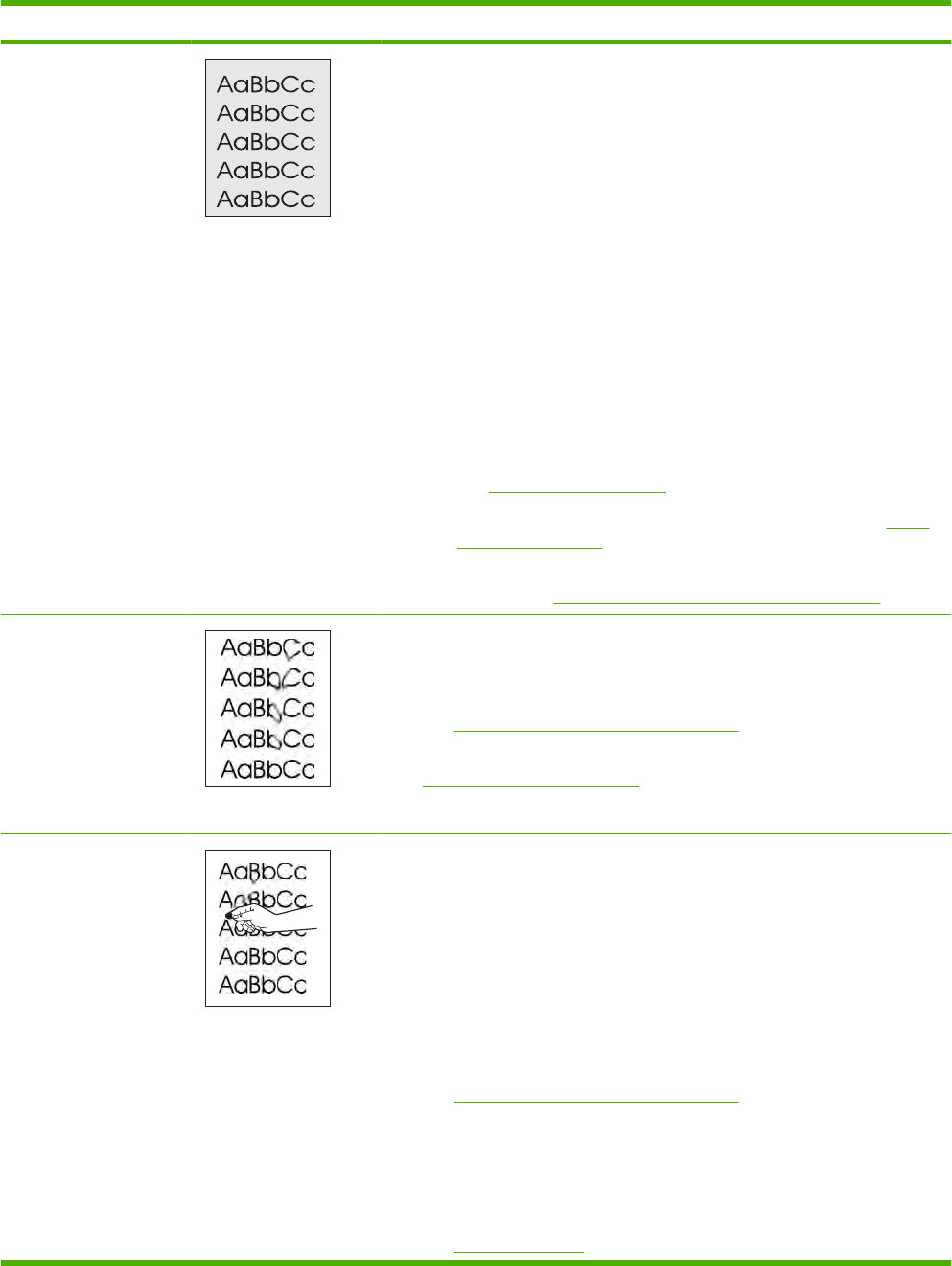
Problem Image example Solution
Gray background (image
is obviously dark)
1. Do not use paper that has already been run through the product.
2. Try using a different type of paper.
3. Print a few more pages to see if the problem corrects itself.
4. Turn over the paper in the tray. Also, try rotating the paper 180°.
5. Open the CONFIGURE DEVICE menu at the product control panel. On the
PRINT QUALITY submenu, increase the TONER DENSITY setting. For more
information, see the product user guide.
6. Make sure that the environmental specifications for the product are being met.
See the product user guide.
7. The print cartridge might need to be replaced.
8. The print-cartridge ground or bias contacts might be dirty. Clean the contacts.
9. Stop a print job before it is complete, and then remove the print cartridge. Open
the photosensitive drum shield, and look at the toner image on the drum.
◦
If the image is not fully transferring to the page, replace the transfer roller.
See
Transfer roller on page 92.
◦
If the toner on the drum is faint, replace the laser/scanner. See
Laser/
scanner on page 107.
10. The high-voltage power supply might be damaged. Replace the high-voltage
power supply. See
High-voltage power supply (HVPS) on page 121.
Toner smear 1. Print a few more pages to see if the problem corrects itself.
2. Try using a different type of paper.
3. Make sure that the environmental specifications for the product are being met.
See
Environmental specifications on page 309.
4. Clean the inside of the product and run a cleaning page to clean the fuser. See
Print Quality menu on page 180.
5. The print cartridge might need to be replaced.
Loose toner Loose toner, in this context, is defined as toner that can be rubbed off the page.
1. If paper is heavy or rough, open the CONFIGURE DEVICE menu at the
product control panel. On the PRINT QUALITY submenu, select FUSER
MODES, and then select the paper type you are using. Change the setting to
HIGH1 or HIGH2, which helps the toner fuse more completely onto the paper.
You must also set the type of paper for the tray you are using. For more
information, see the product user guide.
2. If you have observed a rougher texture on one side of your paper, try printing
on the smoother side.
3. Make sure that the environmental specifications for the product are being met.
See
Environmental specifications on page 309.
4. Make sure that the type and quality of the paper you are using meet
HP specifications. For more information, see the product user guide.
5. The pressure roller is dirty, the fuser film is scratched, or a foreign substance
is on the fuser film. Use the PRINT FUSER TEST PAGE option in the
DIAGNOSTICS menu to test the fuser. If the error persists, replace the fuser.
See
Fuser on page 100.
Table 3-9 Image defect examples (continued)
250 Chapter 3 Solve problems ENWW
